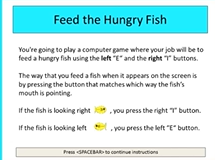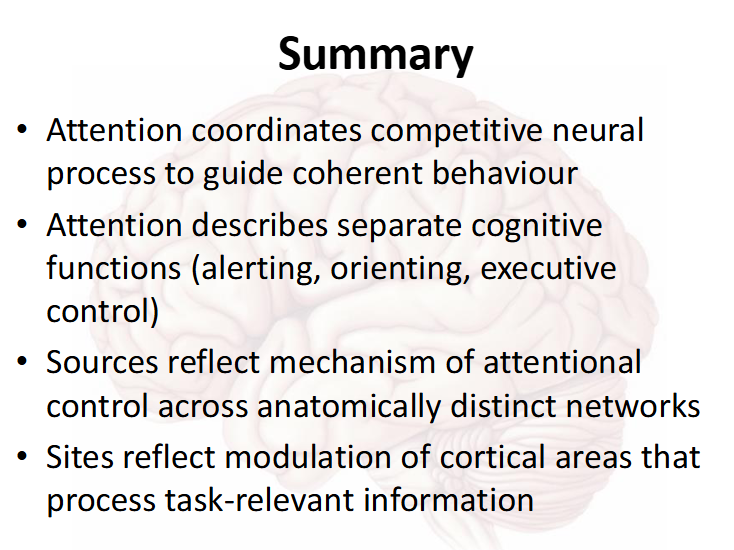Selective attention 3
1/21
There's no tags or description
Looks like no tags are added yet.
Name | Mastery | Learn | Test | Matching | Spaced |
|---|
No study sessions yet.
22 Terms

Fan & Posner on attention
- Described attention as an "organ system"
- Attention has differentiated structures, that are adapted for specific functions,.. and grouped with other structures into a system
so attention works like an organ system with its different parts with specific functions that come together as a system
Subsystems of attention
- Attention can be fractionated into subsystems with specific cognitive functions and anatomical substrates
• Alerting
• Orienting
• Executive control (conflict)/control behaviour
Imaging of subsystems
we want to prove that attention is like an organ with different subsystems (orienting, control etc.) so we look at behaviour and neuroimaging and how they change when you make the switch
- Imaging of subsystems differentiates:
- Source signals - associated with activation of attention (i.e., orienting)
- Site signals - reflect the influence of sources on processing (i.e., signal enhancement in the visual cortex)
Alerting
- Cues in the environment may signal when, but not where a relevant stimulus will occur
- Alerting is preparatory change in the individual's ability receive, evaluate and respond to an upcoming stimulus-so if we know a cue is coming up with prepare for it-out visual, motor systems etc. prepare for the incoming cue
- Isolates neural regions that are specific to this function
Cueing time or location
look at alerting, orieting and executive control in this task
alerting-by using in/valid cue
orienting- ppts attention to a particular space
executive control- conflict occurs when there is an invalid cue
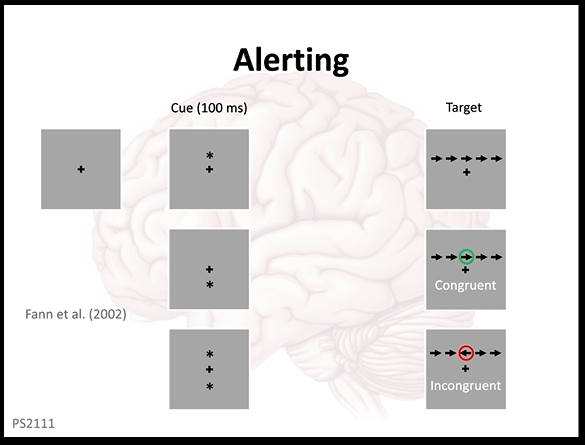
Results/findings-
RT double = double cue -when + where = orienting + alerting
attention enhances reactions to target- cue vs uncued = faster RT when there is a cue that is telling you where to look (orients attention) or when the target is coming
Alerting helps you prepare for something to happen—it’s all about timing and being ready when a stimulus appears. Orienting, on the other hand, is about directing your attention to the right place so you can respond efficiently.
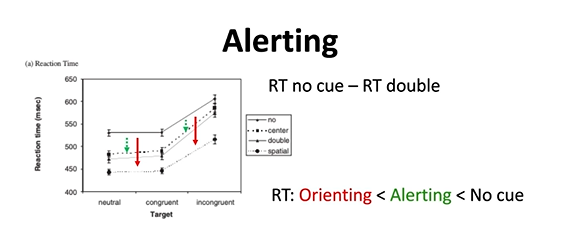
Neuroimaging can tell us about alerting and orieting:
Alerting: sensitive to NE modulation
Orienting: sensitive to Ach modulation
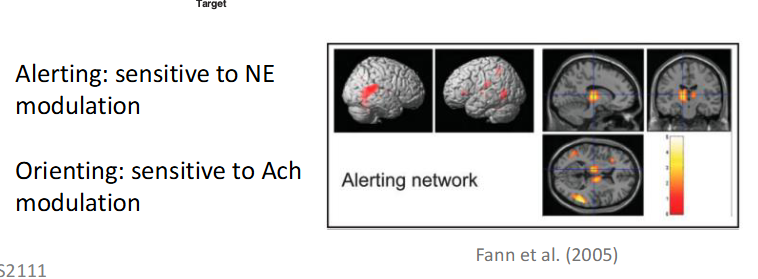
use the formulas to isolate neural regions to look at specific neural activation-
use the formulas to isolate neural regions to look at specific neural activation-
The difference between these two conditions (RT double - RT valid spatial) helps quantify the pure alerting effect, removing the influence of spatial guidance
valid vs invalid cues difference- activations in the brain for both would help you find which part of the brain is responsible for orientation- brain areas response to valid cues =oriention areas
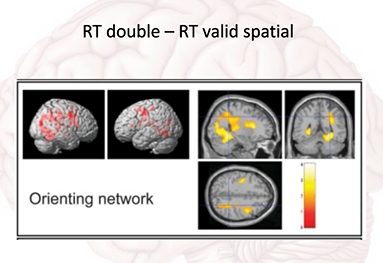
Orienting
top 2 are peripheral cues -brightening of stimulus
- Physical distinction between exogenous (bottom up) and endogenous cues (top down)
- Temporal distinction in enhancement and inhibition of stimulus at cued location
exogenous cues-fast RT, also have inhibition of return
endogenous cue-slower rise time but not inhibition of r
- Functional distinction in the component processes for valid and invalid cues
- Invalid cues require disengagement with cued location to resample scene

Orienting - Neuroimaging used to compare activation in response to exogenous and endogenous cues:
- Endogenous cues associated with activation in FEF, interparietal sulcus and superior parietal lobe
- Exogenous cues associated with activation of ventral prefrontal cortex and temporal parietal junction
diff cue = diff brain areas- suggests attention has diff components as diff brain areas
- Activation associated with orienting to visual and auditory cues overlap
- Cortical activation associated with endogenous orienting of attention towards spatial locations and global features.
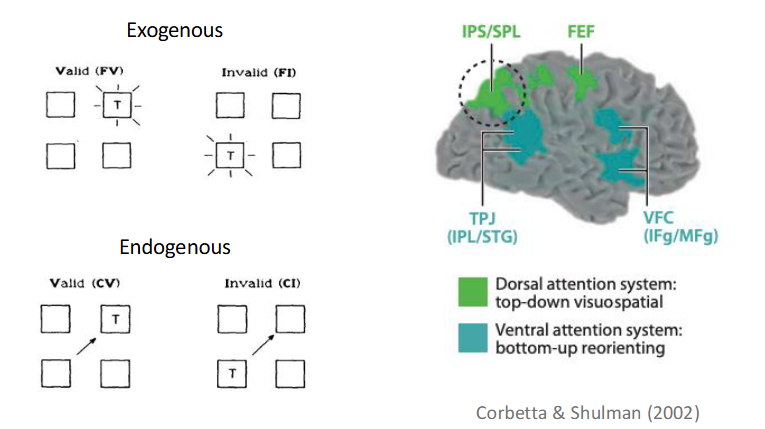
Orieting: cortical activations associated with endogenous orienting of attention are towards?
endogenous orientation towards spatial locations and global features
noise trial- you will see what area of the brain is responsible for orienting attention/controlling orientation as there is not processing of target-which would innovate the visual system but there is no activation of that only the orientation one
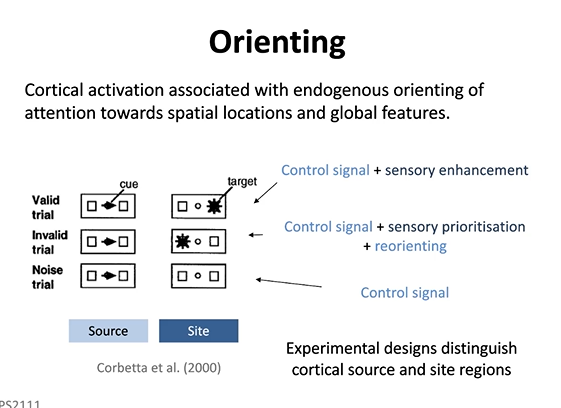
Orienting - what brain areas associated with endogenous selection?
- Frontal-parietal network associated with endogenous (top-down) selection of locations and features (control sources and perceptual sites)

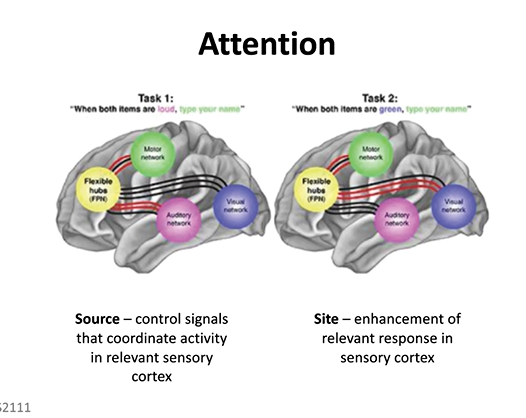
Source of attention: This refers to the cognitive mechanisms that generate attentional shifts. It includes brain regions responsible for directing focus, such as the frontal and parietal cortices.
Site of attention: This refers to the specific sensory or perceptual areas where attention is applied. For example, in visual attention, the occipital cortex processes the attended stimulus.
Executive Control / Conflict
conflict- is all about getting an invalid cue and then having to find where the target really is
RT incongruent - RT congruent
tells you what area/s are responsible for confect resolution and competition between flankers
e.g. stroop task
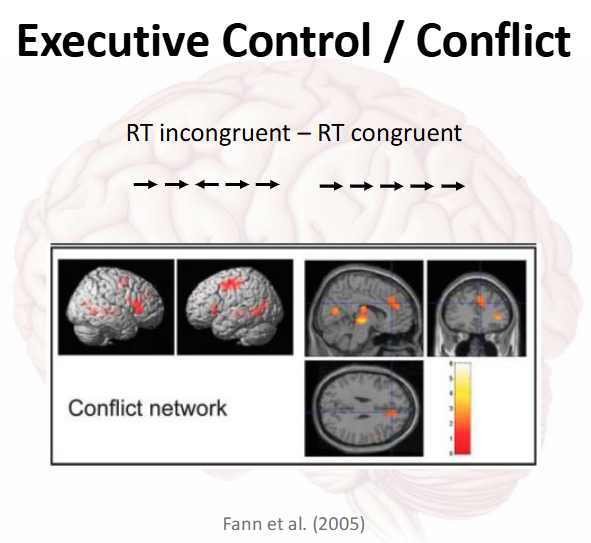
Different areas of the brain for attention
- Posterior DLPFC/inferior frontal junction:
Biases towards sensory or perceptual information that is most task relevant
- Mid-DLPFC: Selection of information in working memory that is most task relevant
- Caudal mid-cingulate: Late stage response selection; Resolves competition between potential responses
- Rostral dorsal ACC:
Response evaluation; Feedback to DLPFC
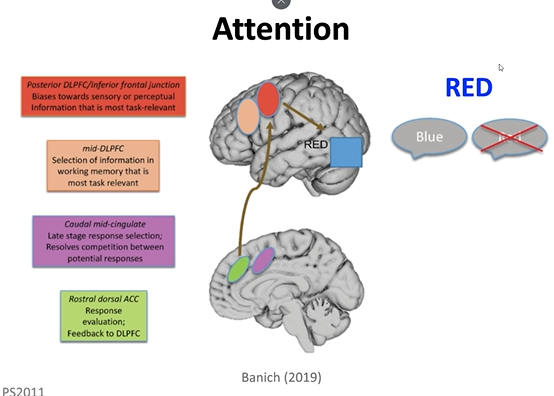
Testing Attention
- Theoretical models and empirical studies describe and explain the brain mechanisms associated with the prioritisation of relevant over irrelevant information.
- Models also provide a way to quantify individual variability in attentional control against normative data. Useful for quantifying changes in specific populations (e.g., older adults or clinically diagnosed groups).
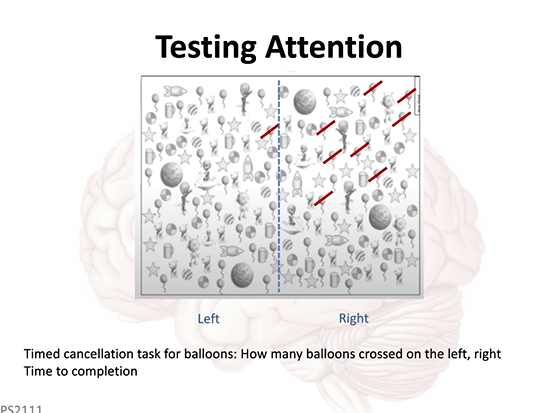
stroke-
left hemisphere = language implicated
right = processing objects in the world is disturbed
neglect = cross the balloons (serial task used) on the ipsilateral side
test for VWM-
using different tones to signal if you are going up or down in the elevator and then testing you on if you remember those tones
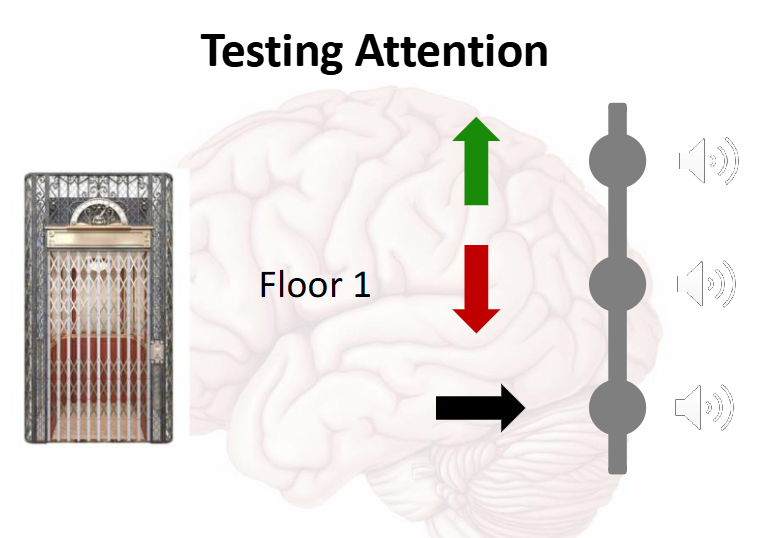
tests for conflict
read opposite number
tests if you have trauma that affects executive control for conflict
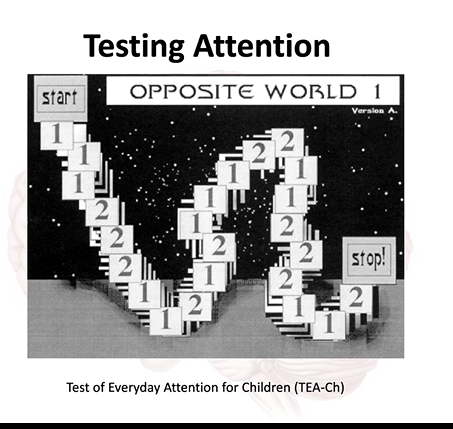
Flanker Task
An experiment in which participants may be influenced by an irrelevant stimulus beside the target
- Flanker Task adapted for children in the Attention Network Test
- Manipulates orienting, alerting and executive control (congruent vs. incongruent)
